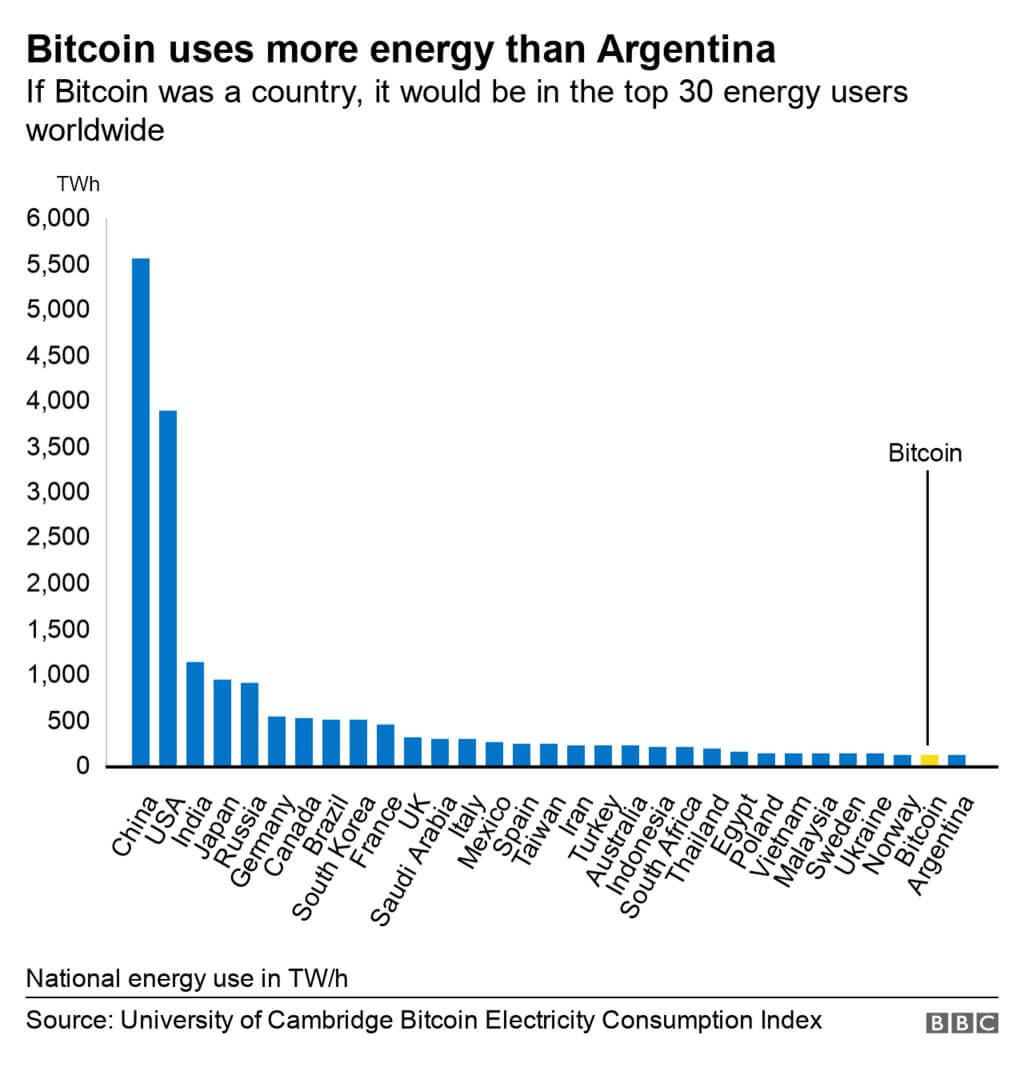It is World Environment Day, the United Nation’s principal mode of encouraging awareness and action in the face of drastic climate change. In the wake of an ever-increasing spate of climate events, and the hurdles faced by governments the world over in implementing renewable energy alternatives, it’s important for everyone to do their part.
Like so many other facets of our globalised economy, cryptocurrency consumes a vast amount of energy and has a significant environmental impact. That said, things aren’t so bleak as they may seem: Many cryptocurrencies are doing their best to address and resolve this—with innovative digital assets come innovative solutions to real-world problems.
Here are some of the impacts of cryptocurrency, the associated environmental costs and risks, and the ways the industry is moving to counter those costs.
Energy consumption of crypto mining
Mining crypto is energy-intensive to a high degree. No central authority regulates cryptocurrencies, so users must validate transactions and update the blockchain with new blocks of information. Needless to say, the verification of these blockchains must necessarily be very difficult and dearly expensive (to secure the currency, ensuring no single party can gain control of the network).
A lot of the earliest cryptocurrencies like Bitcoin, Ethereum and Litecoin implement the Proof of Work consensus algorithm, whereby people ‘mine’ the currency by using computers to compete with each other to solve intricate mathematical problems. This generates fierce competition, requiring increasingly powerful computers, and increasingly vast amounts of energy.
According to the University of Cambridge, Bitcoin mining alone surpasses the annual energy usage of Argentina. In the United States, which accounts for 42.7% of all Bitcoin mining, 40 billion pounds of carbon dioxide was produced in 2021 alone. The demand for computational ability has also driven hardware prices skywards, the constant competition resulting in hardware quickly becoming obsolete, generating vast quantities of electronic waste; by-products of Bitcoin mining equate to roughly 33,000 tonnes annually.

While it’s very difficult to calculate the carbon footprint of cryptocurrency, most of the countries in which crypto is mined are heavily reliant on fossil fuels. That said, people mining crypto are always looking to employ cheaper sources of energy, in many cases relying on alternative energy solutions.
Ways to reduce the impacts of mining crypto
It is clear that, in the face of an uncertain future and the perils of climate change, a shift to renewable, carbon-neutral, or even carbon negative energy sources is inevitable. However, such action is still in its early stages and must be prepared to negotiate remarkably heavy resistance.
Many companies and individuals associated with crypto have resolved to lessen their environmental impact, but such changes can be hard to effect and slow to take hold. Regarding Proof of Work mining, the impact depends on what energy sources are being used—one way to reduce this is to move crypto mining operations from fossil-fuel reliant countries into those with greener energy policies and production.
Another way to reduce this energy consumption is to shift away Proof of Work. For example, the Proof of Stake method of validating cryptocurrency requires very little computing power, granting authority to validate transactions based on what amount of crypto has been agreed upon not to be sold or traded.
Further still, other less energy-intensive methods of validation are in development, including Proof of History, Proof of Burn, and Proof of Capacity. Many sectors of the cryptocurrency industry are moving away from Proof of Work. While Bitcoin is unlikely to change, Ethereum, the second-largest cryptocurrency by market cap, is working towards a shift from Proof of Work to Proof of Stake.
Finally, the Crypto Climate Accords have gained 250 signatures from companies and individuals dedicated to reducing their carbon emissions to net-zero by 2030. With any luck, their good example will be followed as ever more industries realise the sovereign importance of taking climate action.
Ted

